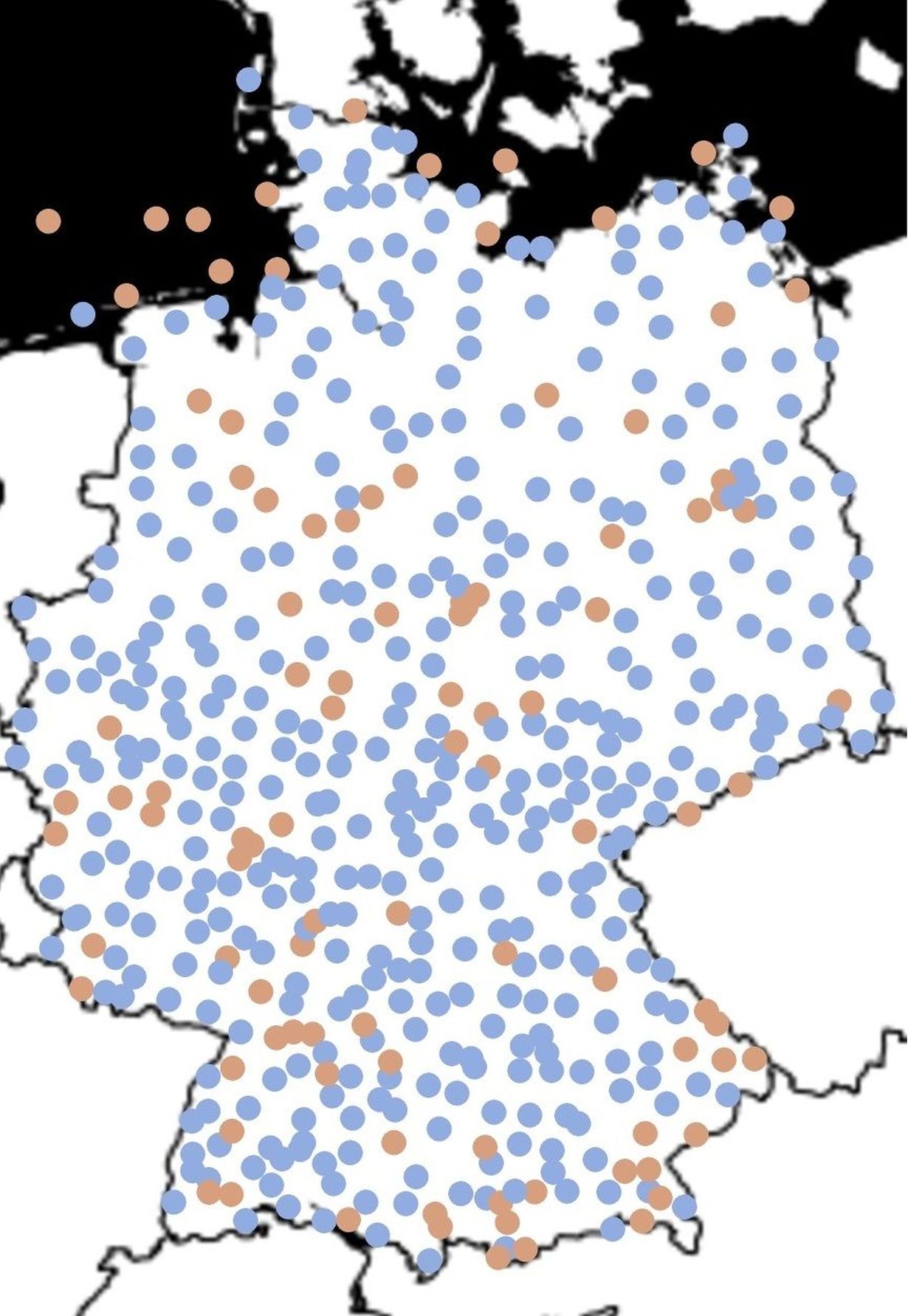Thunderstorms, sun, heat and cold – this year's May showed how quickly the weather can change. Responsible is the “chaotic system” atmosphere: physical properties such as temperature, humidity and cloud cover are constantly changing. Weather forecasts try to predict the chaos and to provide reliable information. Meteorologists and mathematicians at Karlsruhe Institute of Technology (KIT) have jointly developed a new method that, based on artificial intelligence, corrects mistakes in weather forecasts taking into account non-linear correlations.
Air masses that are constantly in motion, temperatures that fluctuate, and changing air pressure patterns make the atmosphere above us hard to predict. But that’s exactly what meteorologists do to make reliable weather forecasts. As a basis they use measurements from the current state of the atmosphere and simulate alternative scenarios, consciously changing the temperature or humidity, for example, and calculating how this modification could have an impact on the weather. For each parameter they compare up to 50 scenarios. “If the results are similar it indicates that a forecast with these values is relatively reliable and that the state of the atmosphere in this area is stable and can be forecasted well,” says Peter Knippertz from the Institute of Meteorology and Climate Research at KIT.
However, this method is subject to systematic uncertainties which distort the results: “The computer scenarios can’t illustrate some of the physical correlations in the required detail or spatial resolution,” says Sebastian Lerch from the Institute of Stochastics at KIT who works closely with Knippertz. For example, temperature forecasts always turn out too mild in certain locations and too high in others, because the models cannot be supplied with local conditions which may vary over time. It is therefore necessary to post-process the results of the simulations using complex statistical methods and expert knowledge to obtain better forecasts and probabilities of occurrence for weather events.
“We have developed an approach that delivers better forecasts than established standard processes,” says Lerch who also works at the Heidelberg Institute for Theoretical Studies (HITS) in Tilmann Gneiting’s group who holds a chair at KIT. This is based on neural networks, in other words computer programs, which process information taking the brain as a model. The artificial neurons are arranged in layers. This is how the mathematicians can “train” the network to process certain data in an optimum way. With every piece of information that flows through the network during the training phase it gains “experience”, continues to improve and precisely determines the probability of the occurrence of local weather events.
“We have added an intermediate layer to our network in which the neurons analyze and evaluate the chaotic, non-linear interactions between the data from the meteorological stations and the simulated physical states of the atmosphere,” says Lerch. “This is how it can learn independently how changes affect the temperature at a certain meteorological station, for example." To train their network, the mathematicians use data from Germany recorded by 537 weather stations from 2007 to 2016. Input values for the neural network were, among others, cloud cover, soil moisture and temperature.
The mathematicians compared the forecasts that the network made with forecasts from established techniques. “Our approach has made significantly more accurate forecasts for almost all weather stations and is much less compute-intensive,” says Lerch. The main advantages of neural networks as a post-processing method are that they can recognize non-linear correlations independently and continuously adapt their knowledge of them. In addition, they can process large amounts of data faster than previous methods and human experts. “We were able to demonstrate for the first time that neural networks are ideal for improving weather forecasts and obtaining information about meteorological processes.”
Transregional research for better weather forecasts
Lerch's research is part of the SFB 165 Transregional Collaborative Research Center “Waves to Weather” (W2W), the co-speaker of which is Knippertz. Scientists at KIT, the Ludwig Maximilian University (LMU) in Munich as the coordinator, and the Johannes Gutenberg University (JGU) are working together across regions and disciplines to make weather forecasts even more accurate and reliable. This is currently the biggest challenge in weather forecasting for W2W: identifying the limits of predictability in various situations and creating the physically best possible forecast. The German Research Foundation has funded SFB since 2015 and has recently extended funding for another four years.
For more information go to
www.kit.edu/kit/pi_2019_070_erfolgreiche-forschung-zur-ausbreitung-von-wellen.php
http://www.wavestoweather.de
More information on the KIT Climate and Environment Center: http://www.klima-umwelt.kit.edu
More about the KIT Mathematics in Sciences, Engineering, and Economics Center: http://www.mathsee.kit.edu
In close partnership with society, KIT develops solutions for urgent challenges – from climate change, energy transition and sustainable use of natural resources to artificial intelligence, sovereignty and an aging population. As The University in the Helmholtz Association, KIT unites scientific excellence from insight to application-driven research under one roof – and is thus in a unique position to drive this transformation. As a University of Excellence, KIT offers its more than 10,000 employees and 22,800 students outstanding opportunities to shape a sustainable and resilient future. KIT – Science for Impact.

